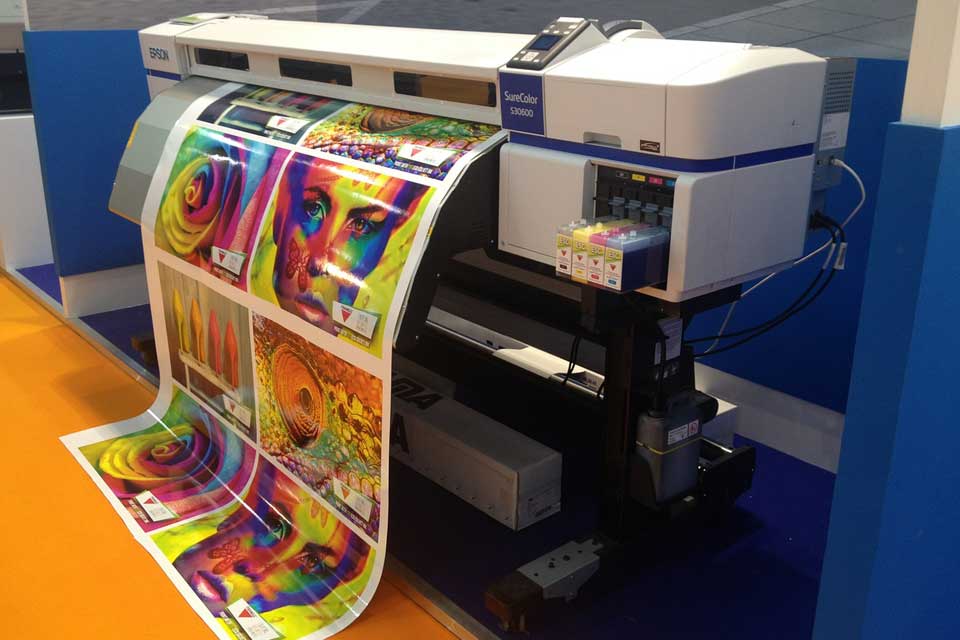We talk to James Jarvis, Channel Director at paper and packaging specialist Antalis, about the print market’s biggest challenges, opportunities and predictions for the future…
Tell us about your company, products and services.
Antalis is Europe’s leading paper, packaging and visual communications merchant (and number two worldwide). We work in close partnership with the leading manufacturers from around the world to ensure we can offer customers the best and latest products and technologies, first.
Alongside providing customers with access to a leading product portfolio, we build relationships by sharing best practice expertise and learning. It’s crucial that we arm customers with the knowledge and support they need to enhance and expand their proposition in a constantly evolving print landscape. With this in mind, our Antalis Academy – the first facility of its kind in the sector – has quickly become a centre of excellence, providing a broad range of advice and training through the provision of practical workshops, seminars and webinars. Now with more than 30 courses available – all led by independent experts – the Academy has expanded to include a host of new subject areas that cover business skills such as social media training and sales techniques.
We also offer additional support in the form of a free Smart Audit, where our experts will review your current materials and procedures and suggest improvements. Also our dedicated Connect team of paper consultants had been set up to provide tailored advice for all types of printing jobs. These facilities and services have been created to demonstrate our commitment to help our customers remain competitive and stand out from the crowd. Antalis takes this approach because we think we will only thrive if our customers thrive.
What have been the biggest challenges the print industry has faced over the past 12 months?
Against the backdrop of an increasing emphasis on digital media, traditional parts of the print and paper industry are still in decline – we are continuing to see a decreased demand for high print volumes which, in turn, means reduced overall paper volumes. However that is not to say the market is staid; as we continue to see pockets of growth in new applications, markets and sectors. With this, the challenge is for customers to be able to be agile and adapt their offer to align with these new trends.
And what have been the biggest opportunities?
There is a real opportunity in the marketing and creative sectors. With people receiving so many digital communications each day, digital fatigue has begun to set in and marketers are coming to recognise the benefits of a tangible, paper-based item as a way to create stand out. That’s why, although print runs are generally getting shorter, customers are increasingly willing to spend more to create bespoke, aspirational concepts in order to achieve cut-through – offering a perfect opportunity for printers to upsell premium, custom and bespoke options. Aligned to this, printers are now able to cost-effectively create variable data campaigns on speciality materials, and in short-runs, for highly targeted and impactful holistic marketing campaigns which can deliver a higher return on investment.
This in turn means there is a real benefit for customers to partner with a consultant who can provide a tailored approach and recommendations on individual projects.
What is the biggest priority for the print industry in 2018?
For us, the biggest priority for printers lies in progression and growth; whether that’s by embracing new innovation, diversifying into new markets or honing their current proposition.
We see it is an incredibly exciting time to be in the industry as we continue to witness a determinable shift away from standard to creative, personalised and often bespoke concepts, reaffirming the importance of print and paper amid the digital landscape. However, in order to unlock this opportunity printers must remain innovative and creative.
That’s why, at Antalis, we are constantly working to bring print service providers the newest, most exciting products first, designed to help them delight customers and, in turn, create stand-out. It’s crucial that we capitalise on new growth areas as more customers seek to broaden their services and diversify into new markets, and Antalis’ Academy is in place to help do just that.
The time is now for printers to take advantage of stand-alone printed communications or print within multi-channel campaigns and we encourage them to look to inspire and advise their customers on the endless possibilities that paper based communication can bring.
What are the main trends you are expecting to see in the market in 2018?
As digital printing is able to better meet demand for personalisation, it will continue to grow in prominence this year. Printers are now able to cost-effectively create variable data campaigns on speciality materials, and in short-runs, for highly targeted and impactful marketing. We therefore expect to see an increasing trend for small print runs and, as such, we offer a split pack service whereby customers can purchase our creative papers in smaller qualities at a minimum of 25 sheets.
What technology is going to have the biggest impact on the market this year?
There’s lots of innovative products set to make an impact this year, including PowerCoat® Alive – an advanced paper range featuring integrated NFC (Near Field Communication) technology. It works in conjunction with smartphones and other devices to display a programmed web-link direct from the paper and is an excellent example of multi-channel communication at its best.
It truly bridges the gap between printed and online communication in a way which far surpasses what QR codes have done in the past.
It will enable businesses to obtain data via a dedicated analytics platform in order to measure the impact of their campaigns and better understand customer behaviour. In an age where data is king, this approach to paper communications can provide an extremely useful commercial tool.
In 2020 we’ll all be talking about…?
How our industry is always changing. I think the future is bright for the print and paper market. There’s no doubt that there are challenges ahead, as with any market, but print and paper is alive, kicking and full of potential. The industry is continually evolving and there are huge opportunities to embrace new technologies, enter new markets and build new revenue streams. I’m confident this will still be the case in 2020!
Which person in, or associated with, the print industry would you most like to meet?
Timon Colegrove of Hunts Printers. He is mad about print and transfers that feeling constantly to everyone he meets. He’s passionate about training and education in our industry but is also very forward thinking and is constantly pushing the boundary of how print fits into a modern world of multichannel communication. I think the way he constantly tries new ideas is great!
What’s the most exciting thing about your job?
The constant opportunity I see all around us
And what’s the most challenging?
My boss
What’s the best piece of advice you’ve ever been given?
1. Never give up; there’s always a way
2. Reach out – more brains are better than one
3. Don’t go out with her!










